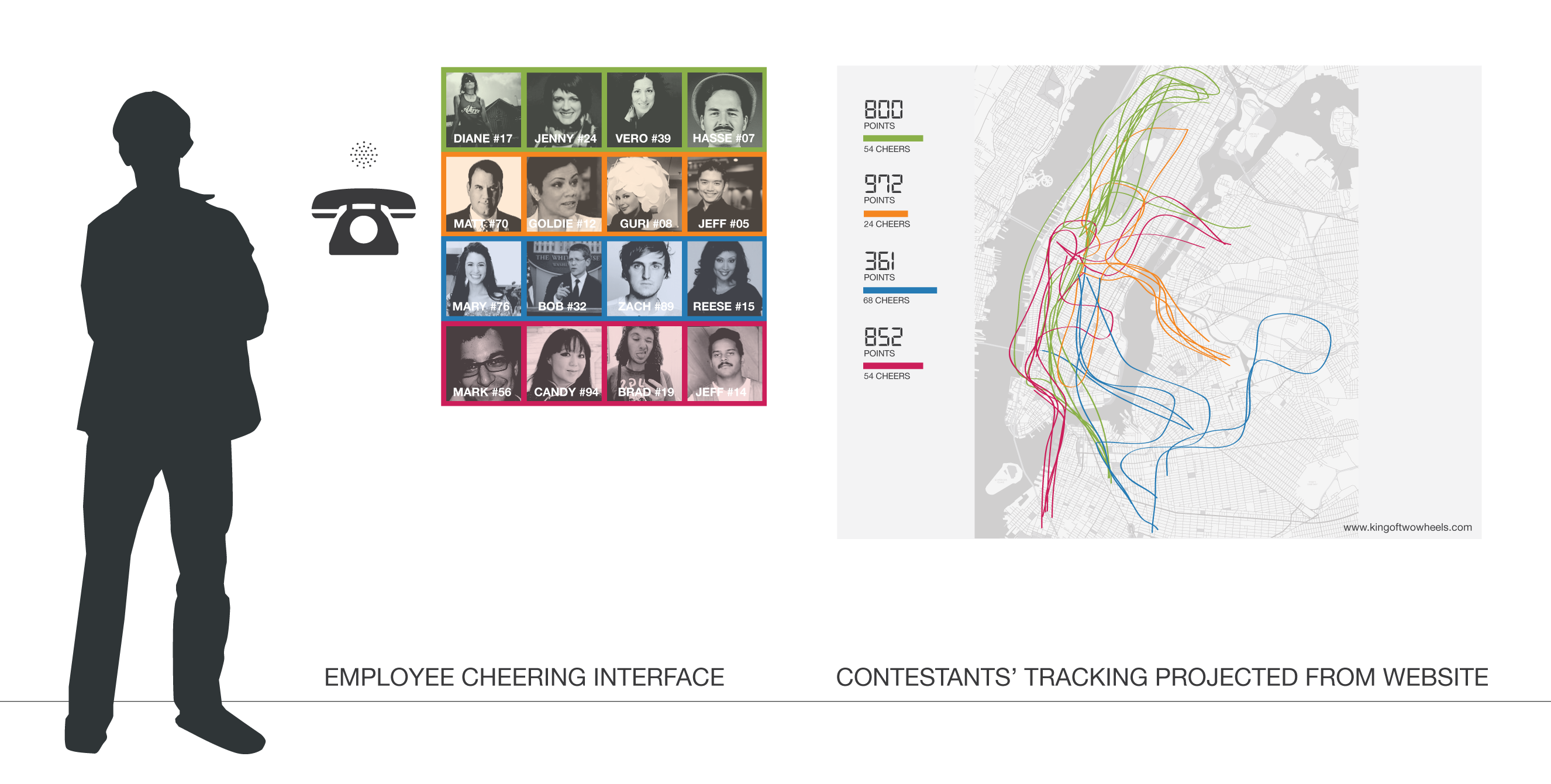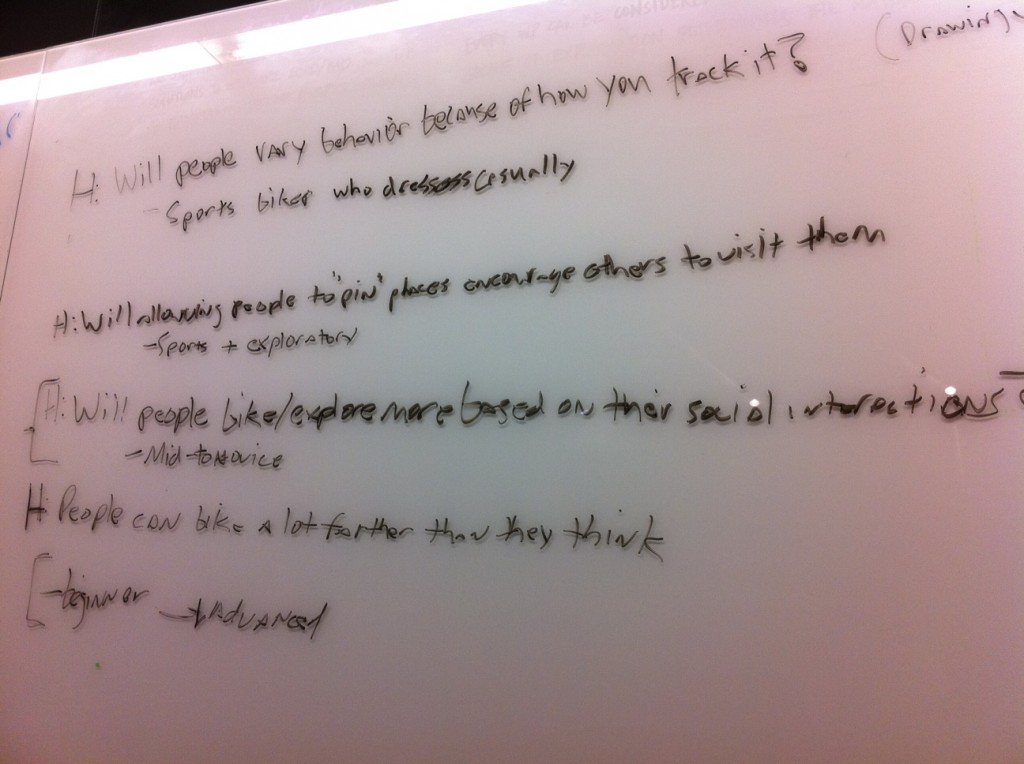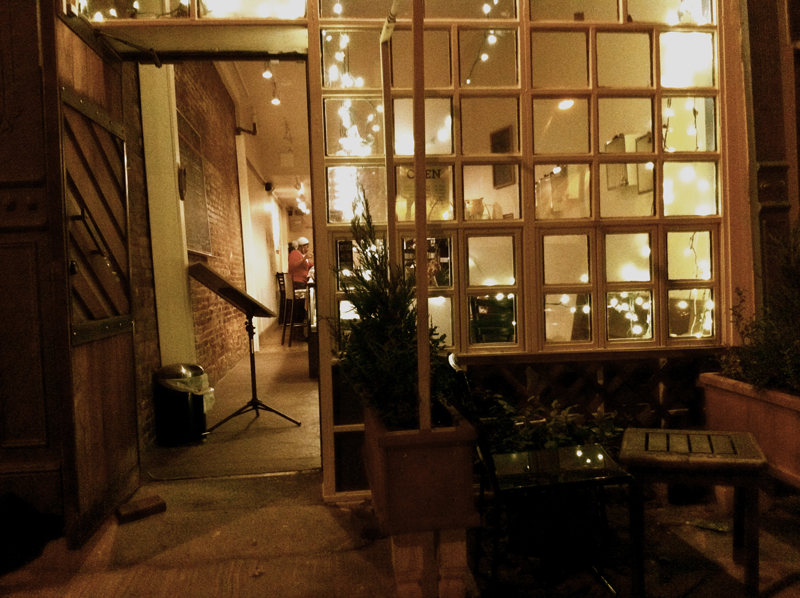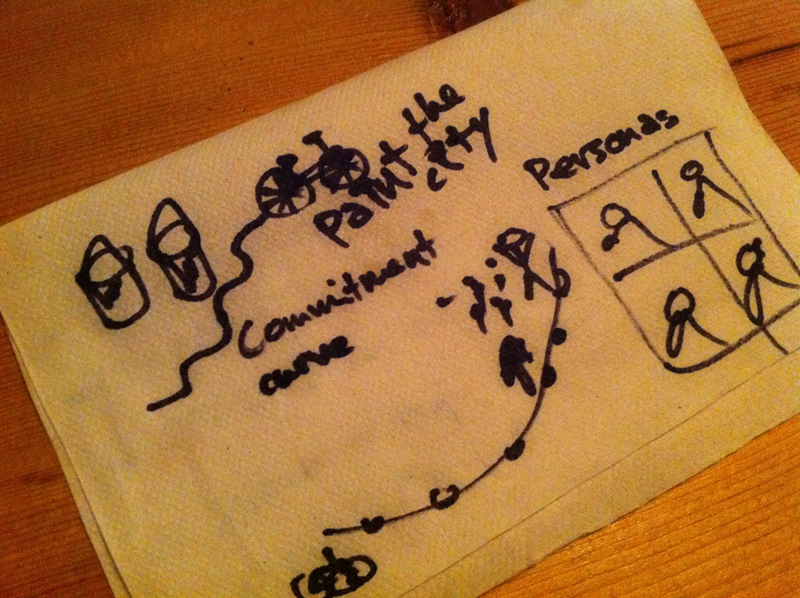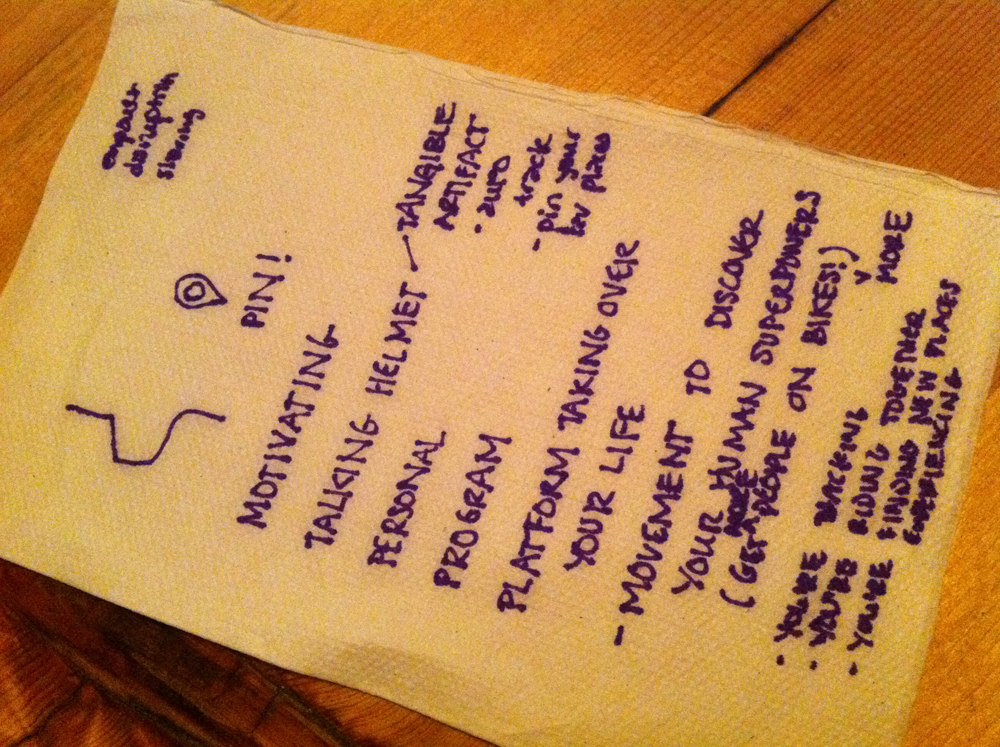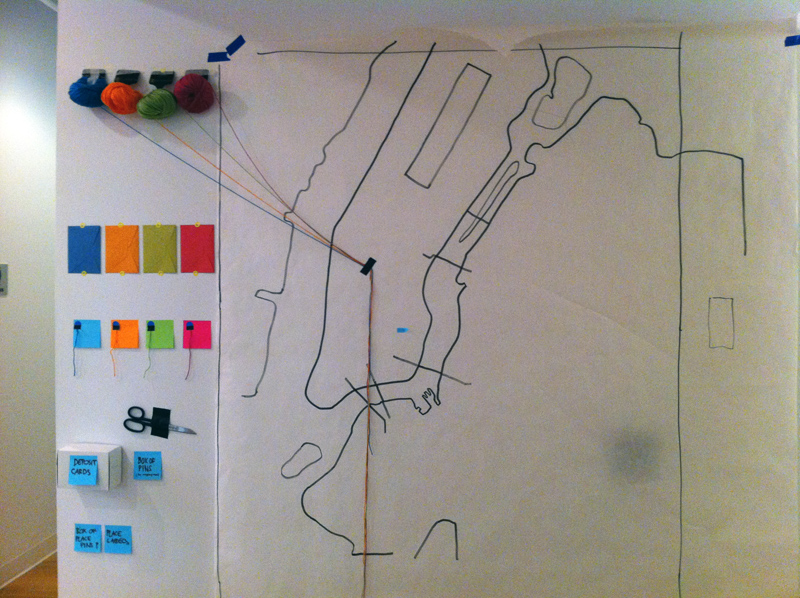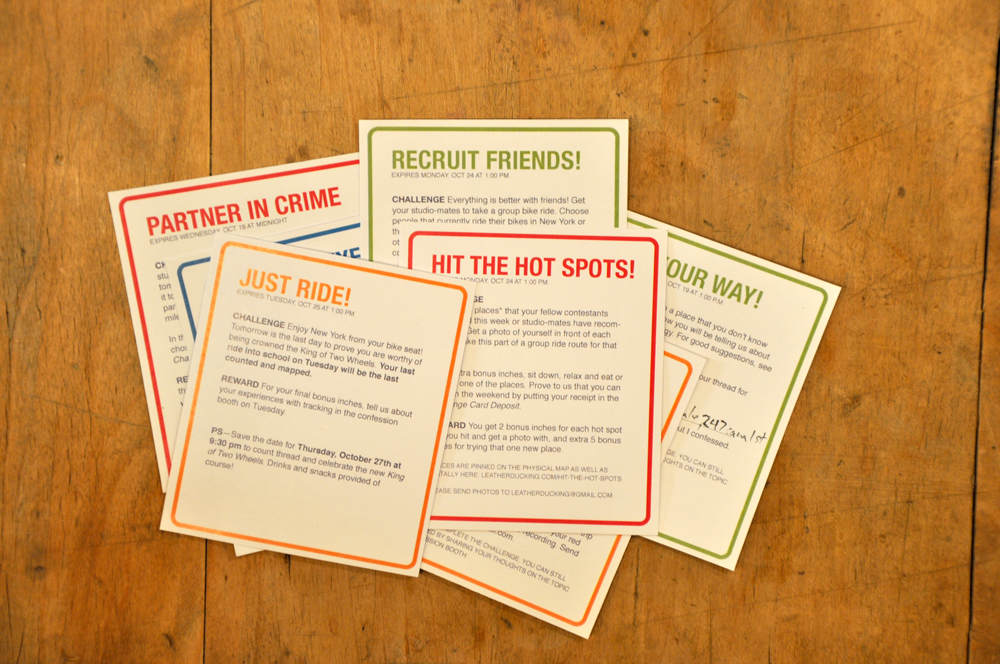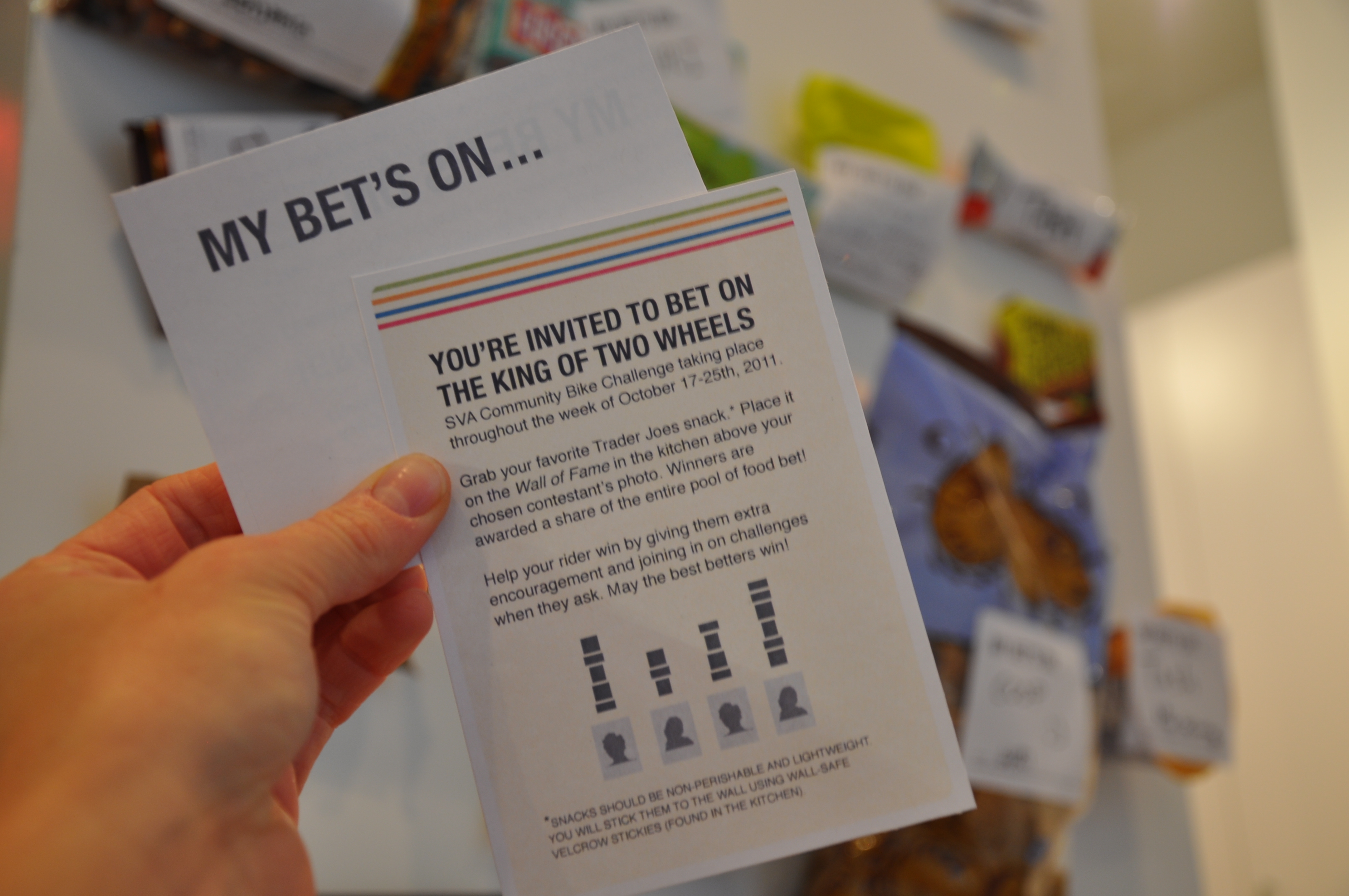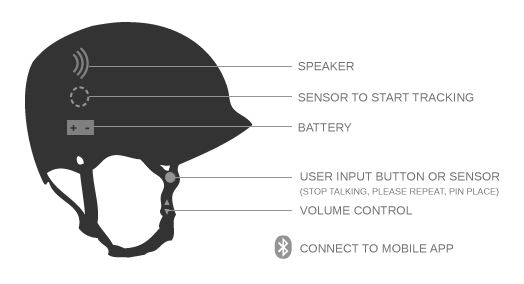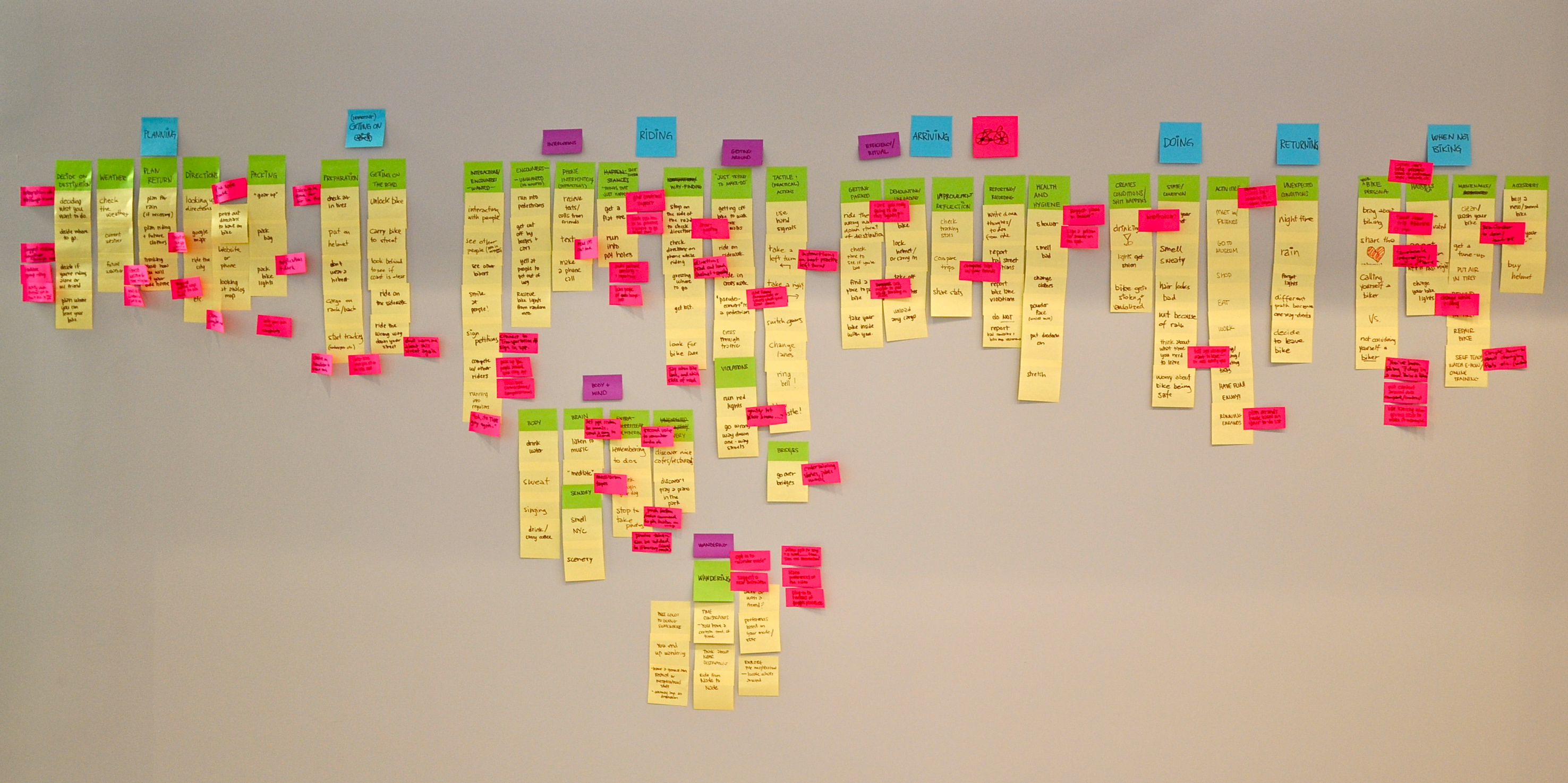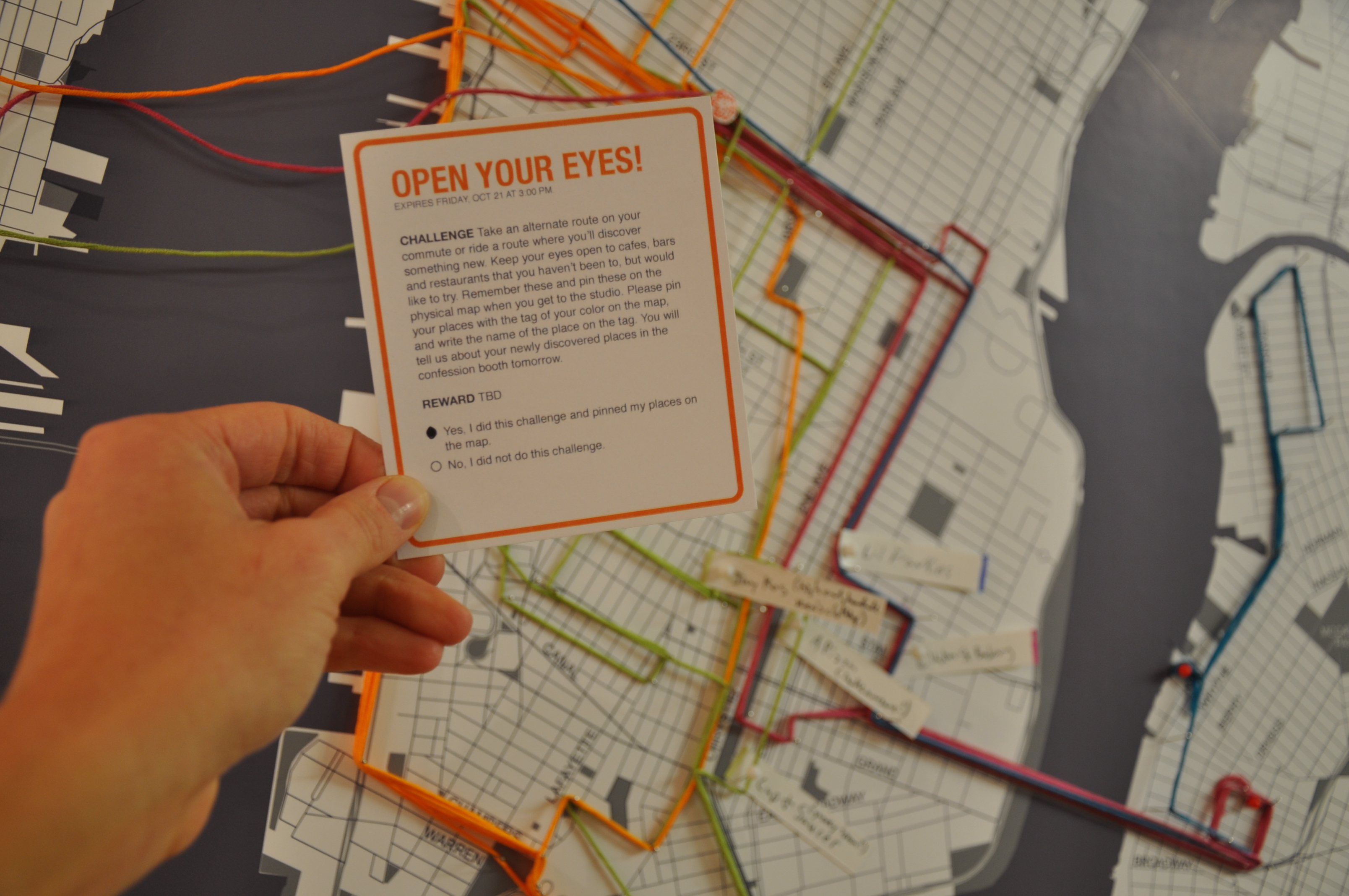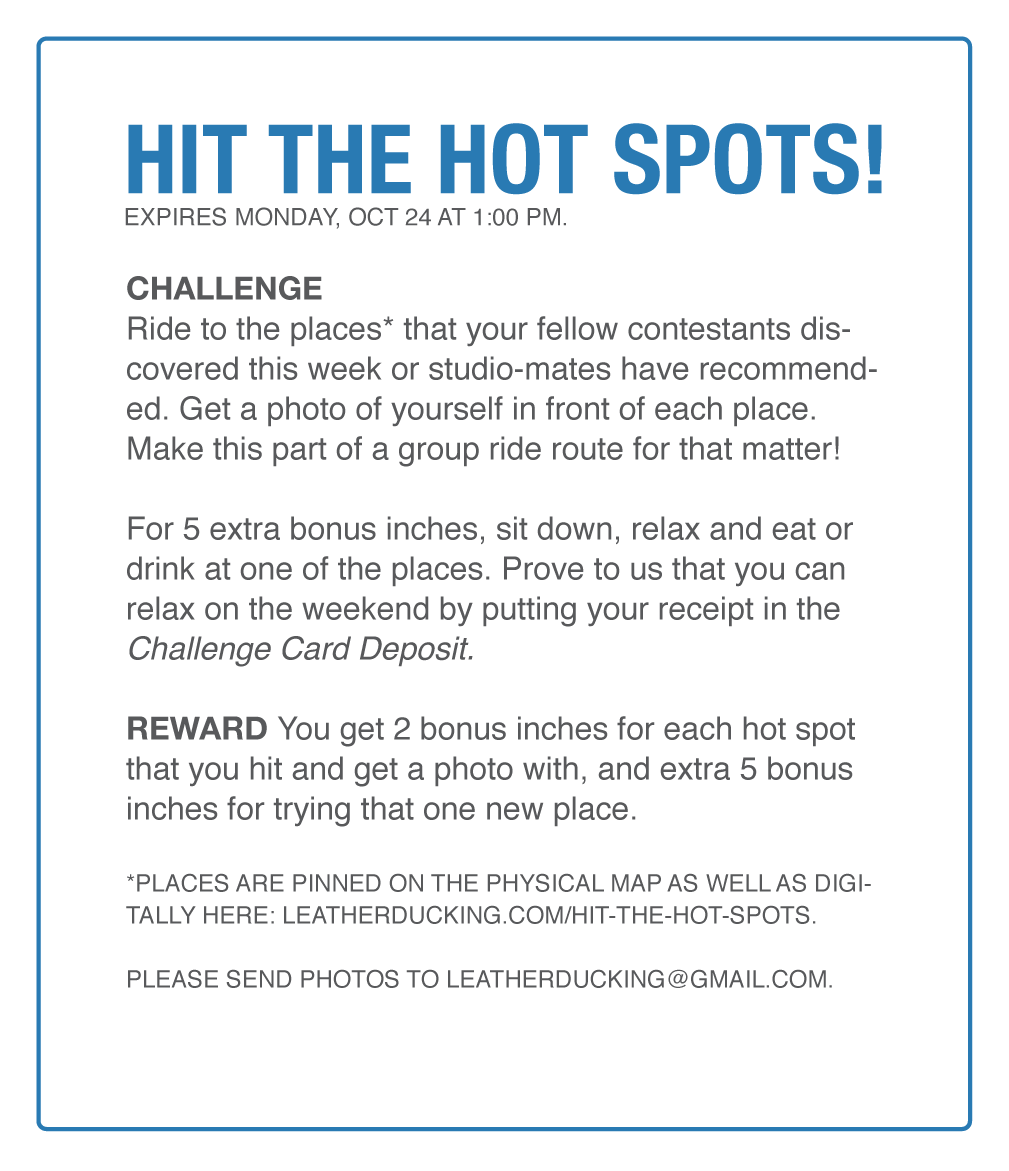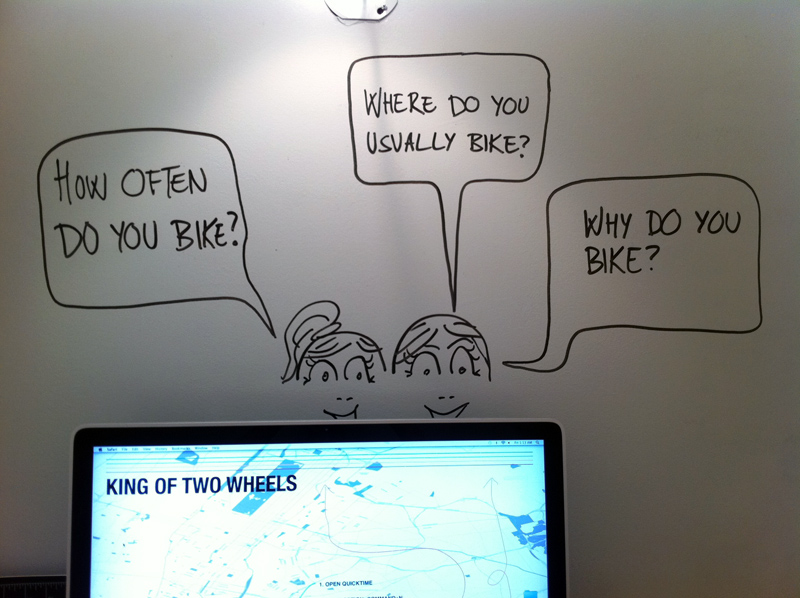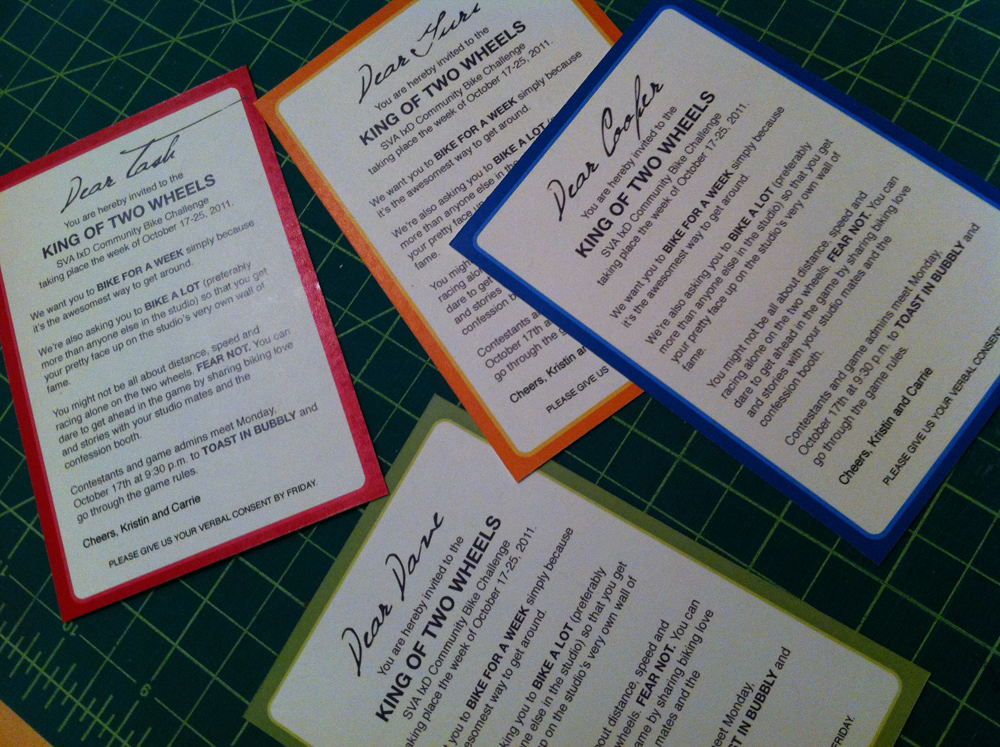This here essay is very meta—about why Carrie and I are blogging, our thesis, and the interaction design disciplin. It is part of our efforts to try to win this amazing blogging scholarship. We deserve it, right?!
Yes, I am a biker. This summer I realized that I should get comfortable with this title. Even though you will never catch me wearing neon spandex, I am perfectly apt to use my two wheels and human superpowers to get where I want, when I want. My bike allows me to be outdoors, and it helps me stitch together the huge and diverse city in which I live, New York. Biking makes me feel empowered and free, as well as a part of something bigger—an important movement toward a better quality of life and a healthy city environment.
As classmates at the School of Visual Arts’ Interaction Design program, Carrie and I both know the secret to how to get in touch with your superpowers. We bike together to and from our studio in Manhattan every day. On one of these rides we realized that it is time we spread the joy of biking. Our thesis year would be our opportunity.
PUBLISHING MESSY THOUGHTS
When you have seen the light, how do you make other people see it too? How do you help people change their behavior? We have had numerous questions and ideas. And though it’s hard to let people in on our messy thoughts, we do it through our collaborative blog. As thesis partners, Carrie and I realized early on that we had to overcome our perfectionist tendencies and dare to share our thoughts before they were completely thought through. Admittedly, our thoughts have been crazy, stupid, clever, naive, optimistic and everything in between. We need to document them all.
The blog format can be scary. As soon as you hit ‘publish’, your brain dump is there for the world to see. However, that trait pushes us to structure our thoughts in ways that are not only legible the moment we have an idea, but also comprehensible when we look back to ideas we had months ago. As our process so far has already shown us, the far-out concepts might very well be the ones to pursue!
A TALKING HELMET
We’re now deep in the process of figuring out how to create a smart and charming bike helmet to be used by bikers in urban environments. This helmet will likely become a talking helmet that knows what you’re up to, reflects upon it, and gives you directions, motivation, and tips about routes to ride and places to visit. To develop this idea we are researching aspects around wayfinding, motivation, tracking and discovery of a city from a bike seat. Our blog has become integral to keeping track of this research and moving forward in our pursuit of the core features that will make up the ultimate digital bike companion.
ENGAGING OUR COMMUNITIES IN BIKING
The blog enables us to talk to each other, as well as classmates, teachers and the bike community. Bike activists, local politicians, creatives and developers all have valuable insights that can shape the product we are making. However, considering the nature of our idea, we are also interested in those that are not yet convinced that biking is a viable form of transportation. For the moment, we hope that our enthusiasm for riding shines through the blog and may inspire others to ride. In the future, we hope that our talking helmet will help even more people make the leap from being a leisurely bike rider to a confident commuter.
AN OPEN DESIGN PROCESS
We do love biking, but we also love design! We hope that the openness around our thesis will give people insight in to our creative design process, and show how we, as interaction designers, develop a product that is both digital and physical. Design is not only about shapes, fonts and colors. Interaction design can involve strategy, concept development, marketing, user flows, interface design, prototyping, testing, electronics and software. The interaction design discipline is expansive, and we want to share our knowledge and techniques with the curious individuals eager to learn.
With our graduate program being three years young, it feels natural to create awareness around our practice. Our blog pushes us to find words to accompany our process, and in return helps us explain what we do to friends, family and aspiring interaction designers. If through the blog, we can motivate individuals to be mindful of, and even practice interaction design, it would mean a lot to us. We honestly believe that the “wicked problems” of the world, like world hunger, recession and global warming, could use some more design thinking. Even on smaller scale projects, the interaction design role is very rewarding. Yet, most people don’t even know what an interaction designer is!
A REWARDING COLLABORATION
We both had our “detours” before we found our career calling; Carrie’s background is in architecture, while mine is in information science. Given the multi-disciplinary nature of any interaction design project, our different backgrounds actually become our strengths. We could not take on our chosen thesis endeavor individually. We are dependent on each other’s skill-set, as well as each other’s energy, to move the process forward. Our blog is an important force in this. Even though the blog reveals process detours, half-baked ideas and up-hill battles with incomprehensible technology, we anticipate it telling a good story—a story about a rewarding collaboration, a year deep in thesis, and the journey of making a real, and hopefully working, product for urban bikers.
